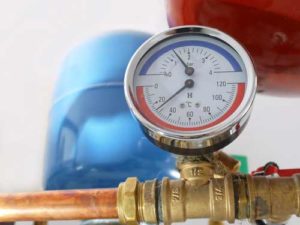Water heaters are amazing devices that provide hot water to every area of your house whenever you need it. But because these devices are metal containers holding water, are under a great deal of pressure, and operate at high temperatures, there are some risks associated with the units.
But with the right maintenance steps, you can keep your water heater running properly and safely, and ensure it has the longest life possible. And to get your water heater ready for this fall and winter, follow these simple maintenance tips.
Double Checking the Temperature

Most people set the temperature between 120 F and 140 F, but it’s becoming more common to set heaters to 140 F because of the bacteria-killing properties of this heat level. It seems that 120 F isn’t quite high enough to kill certain bacteria in the water, but it is a good temperature for energy savings.
Adding More Insulation
Everybody wants to save money and energy these days, and you can do this by insulating your water heater tank and pipes. If the pipes don’t have any insulation on them, you can add insulating sleeves that will help reduce energy loss. Similarly, if your water heater tank feels warm to the touch, you should outfit it with an insulating blanket or jacket.
Safety tip: If you have an electric water heater and you outfit it with a blanket or jacket, do not set the thermostat above 130 F. Doing so can cause the wiring to overheat.
Getting Rid of Sediment from the Tank
Sediment naturally builds up in the bottom of your water heater tank, and this can allow bacteria and microbes to grow. Not only can this corrode the tank, but if your water heater isn’t set to the right temperature, it can also allow bacteria into your drinking and bathing water. To prevent this, you should flush the tank on an annual basis, as this removes sediment and mineral buildup.
Safety tip: Wear protective shoes when you flush the tank, because the water coming out is very hot, and spills could burn your skin.
Checking That the Anode Rod Is in Good Condition

Safety tip: Before inspecting the anode rod for corrosion, turn off the power and the water, turn on a hot water faucet in the house to relieve pressure, and drain several gallons of water from the drain valve before unscrewing the rod.
Making Sure the TPR Valve Is Working
Without the temperature and pressure relief valve, your water heater is at risk of exploding under the pressure that can sometimes build up inside the tank. To test the valve, simply lift the metal lever attached to the discharge pipe to open the valve. If the valve is working properly, there will be a rush of water out the discharge pipe.
To help keep your family and your home safe, you should inspect and maintain your water heater following these steps annually. Call Valley Plumbing, in Salt Lake City, UT at 801-341-4222 immediately if you encounter any problems, or need help with other plumbing and maintenance issues.

